My Quad-Motor Go-Kart Broke Under Full Power

Adding voltage to an electric motor will increase its speed. Adding current will give it more torque. In the case of my quad-motor go-kart, the voltage is not going to change much. However, its motors’ current will be going up a lot.
This was the situation I found myself in, trying to hop up the current rear-wheel-drive iteration of the kart. If you’re just tuning in, I’m making a quad-motor go-kart with a maximum potential output of 20 kilowatts, or around 26 horsepower. This is one part of my journey to unlock the full potential of this platform.
The factory-rated power for the motors—what voltage and current they can sustain indefinitely without overheating—is 2500 watts or around 50 amps at 48 volts. I planned to double the current, which is sustainable for short runs. As it turns out, though, overheating was the least of my worries.
All motors have two parts: the rotor and the stator. As you might glean from the name of the stator, it remains stationary while the rotor spins around or inside it. The rotor is what the actual wheel and tire are connected to.
The stator, in the case of every hub motor I’ve seen, is connected to a shaft which is either clamped or bolted onto the body/suspension of the vehicle. The hub motors of the popular hoverboard product, for instance, are simply clamped to the chassis. You can buy those motors cheaply on eBay, for what it’s worth. They don’t have integrated mechanical brakes, they aren’t very powerful, and they’re a small diameter.
Mine are threaded, but a flat spot is milled on either side of the shaft in order to provide a sort of keyway to keep the stator from spinning. It would be nice if the threads on the shaft were reversed as well, so that if the stator did spin it would simply be tightening itself down instead of loosening (this is foreshadowing). That’s asking a lot of Alibaba, though.
My old three-wheel karts only ever put down around one kilowatt of power to an eight-inch wheel, so I never even needed a keyway. I just torqued the motor down with a ratchet slotted into the end of a jack handle, as is standard procedure. This time I figured that wouldn’t work, because it didn’t on the Motocompacto Type R. So I slipped some heavy stainless steel keys over the motor shaft which were bolted to the frame. With these installed, I went out for my first test.

One of my three-wheel karts going down in the elevator at my old apartment
The first indication that those keys wouldn’t be enough was how fast this thing was, even on the motor’s recommended continuous power. The throttle really needs some tuning because it’s twitchy in the mid-range. As soon as you go near the pedal it sends a ton of current to the rear wheels, lurching the kart forward. There’s also a slight delay between coming off the throttle and the regenerative brakes engaging, which I’ve never experienced before. Not sure how to fix that.
My decision to add no caster in the steering also became very evident at higher speeds. Let me explain myself here.
I add “sophisticated” features to my karts one at a time so I can wrap my head around them and make sure they work. In this instance, that sophistication was kingpin inclination. Caster was something I didn’t feel like I had to do. My other karts didn’t have it and they handled just fine.
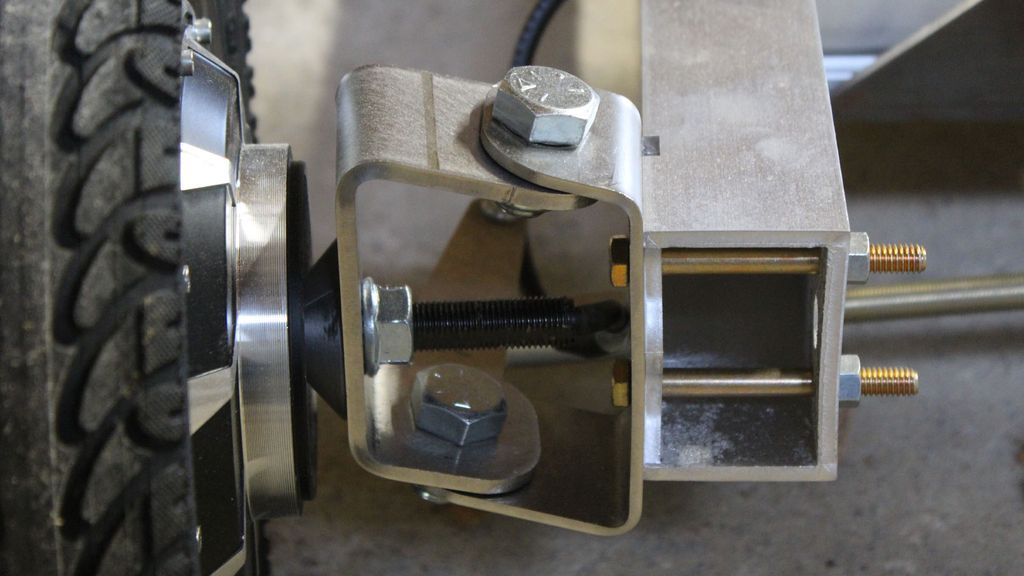
A little kingpin inclination reduces my scrub radius and makes the steering self-center, but it doesn’t help much at high speeds
Plus, when the kart had suspension, I expected it to sag down under my weight, giving caster naturally. When I locked out the suspension, though, I didn’t add any caster back in. Ultimately, it’s all my fault.
The result of this extra power, combined with other design flaws, is terror. The steering feels heavier as the speed increases, but it’s also trying to dart all over the place. The steering wheel itself is also only connected to the steering column with two nuts done up against each other.
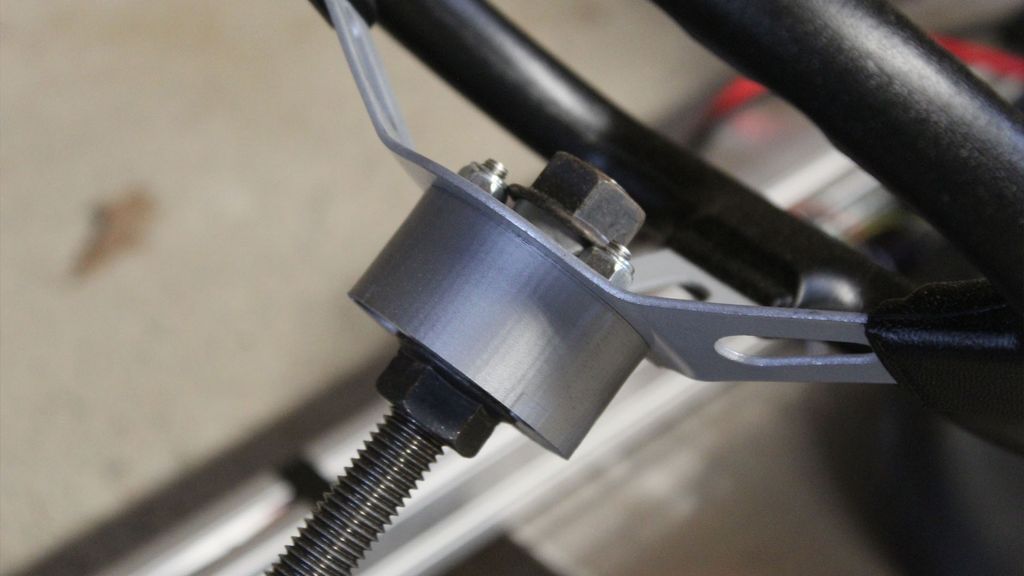
This has always been enough for my smaller karts, but not anymore
Since the steering force has gone up, the wheel slips at high speeds. I turn the wheel and the kart does not turn at the worst possible time. This was another one of those features that worked great on my smaller karts but did not translate at all to this bigger one.
All of these things came to a head in the same corner. And when I got back to my garage, I discovered the motors had rounded out those stainless keys like they were made of butter. All the wires were twisted into a pigtail.
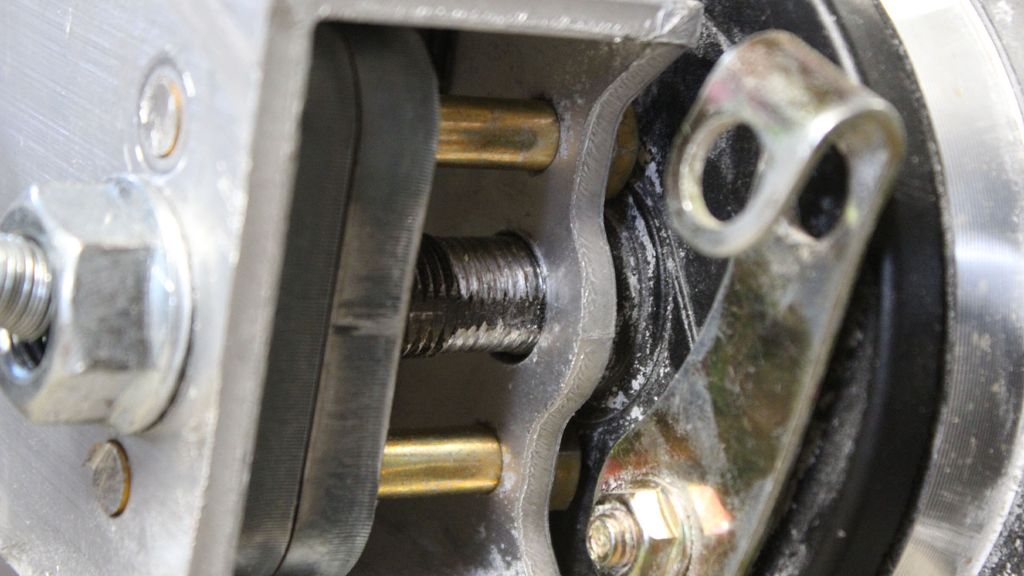
Once the stator shaft came loose, it machined itself round on the stainless steel retainer
Fixing The Kart
Addressing these problems required a mix of actual fixes and some, uh, resourceful tweaks I made instead of rebuilding the steering.
I wasn’t going to turn the power down, so I needed thicker keys to hold the motor shaft straight. How about two pieces of three-eighth-inch steel? Good luck spinning that.
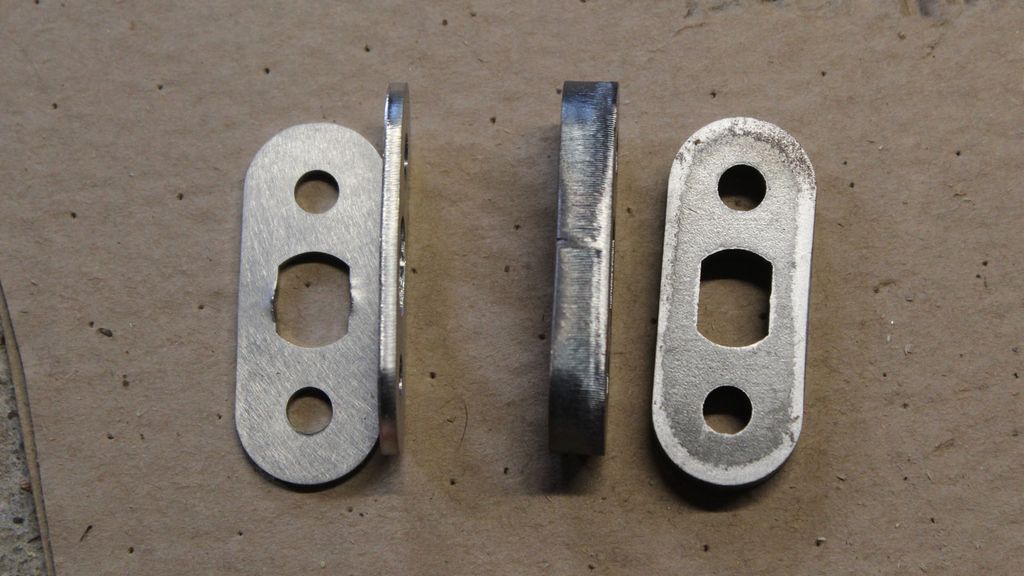
Spoiler alert: The motors are now secure
To fix the steering, I did two things. I tightened the nuts connecting every component on the kart and took some air out of the front tires. Hopefully, this would help dampen out some of those lack-of-caster impulses.
I also wanted to know why the regen wasn’t engaging properly, so I got a cheap tablet on Amazon and linked the inverter to it via Bluetooth. This way, I could track the current going in and out of the motor as well as monitor other diagnostics.
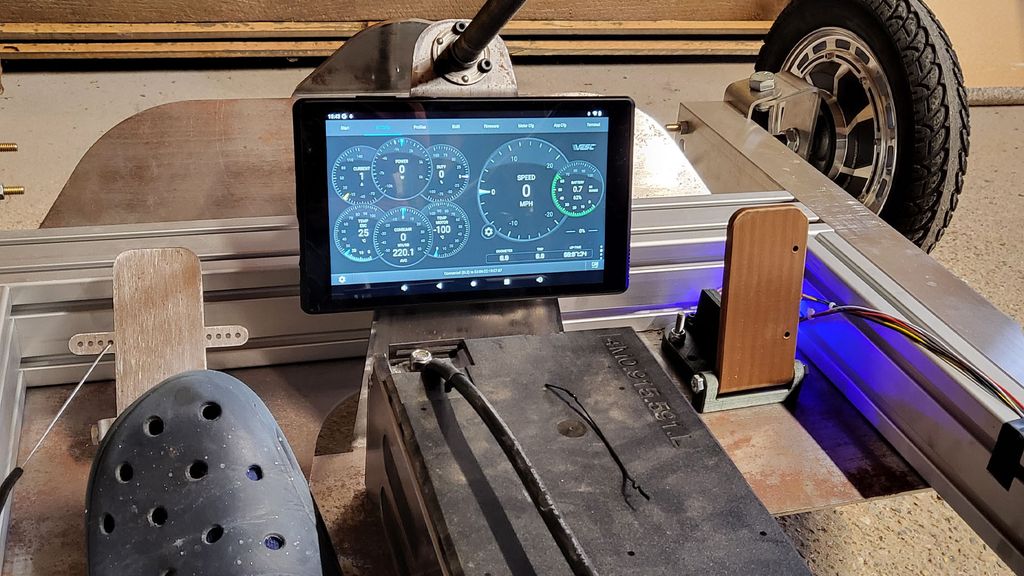
Infotainment has never been so easy
Most of that stuff actually worked. The rear wheels are now locked in place, and I know I can use the same sort of clips for the front wheels when the time comes to turn those on. The steering is also a lot better now, but the column still needs to be replaced with a keyed shaft.
The tablet didn’t tell me much about the regen problem, but at least now I have a full set of gauges to monitor the kart. I’m not sure how that’s going to work when I add another two inverters, though. Two tablets? Unclear.
Altogether, the kart now feels pretty good, but all of those small issues still exist in the back of my mind. The steering will eventually loosen, the regen still feels sketchy, etc. I need actual solutions to those problems, not temporary fixes.
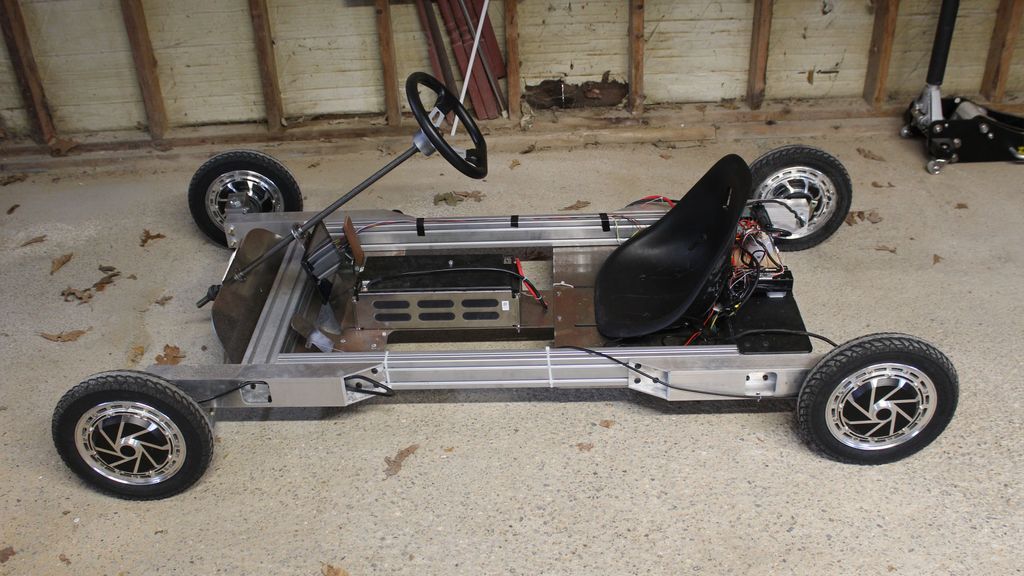
There are a few other small changes to make to the kart too, but I’m going to experiment with putting that stuff on video for the next installment. I think a lot of this will be clearer and more interesting in that form. Until then, sit tight.
Read the full article here








